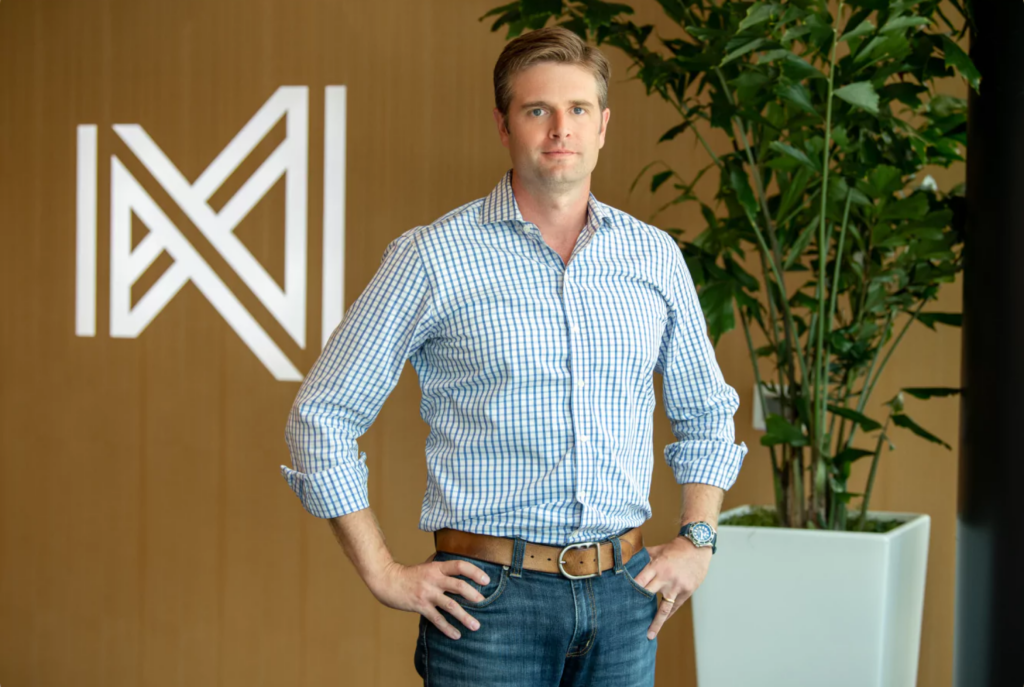This article aims to share a quick explanation of—and maybe spark a few future conversations related to—one framework I often invoke when thinking about specific startup strategies.
The TL;DR is not just that it’s important to be “on-trend” but that there is a rare but powerful hack, shifting from building a company based on an emerging market to building a great product for an existing market that invokes new capabilities. While the case study below describes how virtual machines were used 10+ years ago to deliver better security products, the same could apply to many of today’s companies incorporating generative AI into powerful new products.
With That Preamble In Mind…
I don’t know, but many people tell me, “Everyone loves plots of mathematical functions.” No fake news here, and few things are guaranteed crowd-pleasers as well-crafted plots of derivative functions. So….
Feast your eyes on THIS!:

What I like about the idea of derivative functions, which is so beautifully called out in the above plots, is that they stress two key points about the relationship between something that is derived from something else:
- The growth/value of the derived element is inextricably linked to that of what it’s tied to
- Usually, a derived element exhibits higher volatility than what it’s derived from, and it is shifted (especially important if we think of the x-axis as time)
Great examples from history:
- Oil rig day rates as a derivative of the price of crude
- Networking equipment sales as a derivative of internet adoption
- Potential employers’ appreciation in my first job (at Enron) as a derivative of Enron’s stock price 1999-2001 📉

Startup successes are often accelerated because companies intersect with great “meta-trends.” Catalysts are sometimes unpredictable, like the surprise tailwind that COVID-19 provided Zoom, but founders often explicitly tie their strategy to another trend. This can be wildly successful–like Pure Storage racking consumer-grade flash for enterprise storage. Everyone likely has their own meta-trend examples from history; mine include:
- Shift to cloud computing, ‘natch
- Evolution of cyber attacks: from disruption to profit-generation
- Compute abstraction: virtual machines/containers/…
- PC adoption: the “wild” idea that there would be a computer in every house!
Or, the trend can be the anchor that prevents a company from achieving its greatest successes.
Think about the slog it would be to focus on the following:
- Autonomous vehicle Infrastructure (e.g., charging, mapping)
- AR / VR anything
- Building mobile apps for feature phones (cir. 2005)
Simple <> Easy
As with much of the art of building successful startups, the concept above is simple but incredibly difficult to implement successfully.
Obviously, timing matters, and we must acknowledge that companies that choose the right time to start an AR/VR-based business may succeed. That time hasn’t been at any point over the last 30+ years, but maybe it’s finally now (all eyes on Apple’s Vision Pro)?
Another worthwhile observation is that sometimes, giant dislocations make a failed strategy obvious only after the fact. Mobile OS consolidation is a great example of this: few founders or investors knew in 2005 that the world was on the cusp of a wholesale shift to iOS + Android.
Sometimes Breaking Up Is Best
One of the most successful strategies I’ve seen is to take an emerging technology and then create a new product capability that incorporates it.
To illustrate, I’ll use FireEye, a great cybersecurity company in the late 2000s and a fantastically successful IPO in 2013. Virtual machines were everywhere at that time, and many startups were formed to secure VMs. Conversely, FireEye had the insight that VMs could be used as ephemeral sandboxes to examine malicious network traffic and, therefore, better protect all computer systems (not just VMs). Ultimately, VMware and others developed proprietary security for their platforms, kneecapping the security-for-VMs companies. But FireEye thrived because the power of its product was not dependent on ecosystem partners (either their adoption or competitive maneuvering).
In essence, find a way to do something with emerging tech as opposed to something to it. This creates separation from the adoption of that technology and means that the future of your business is not an inherent derivative function of something else.




